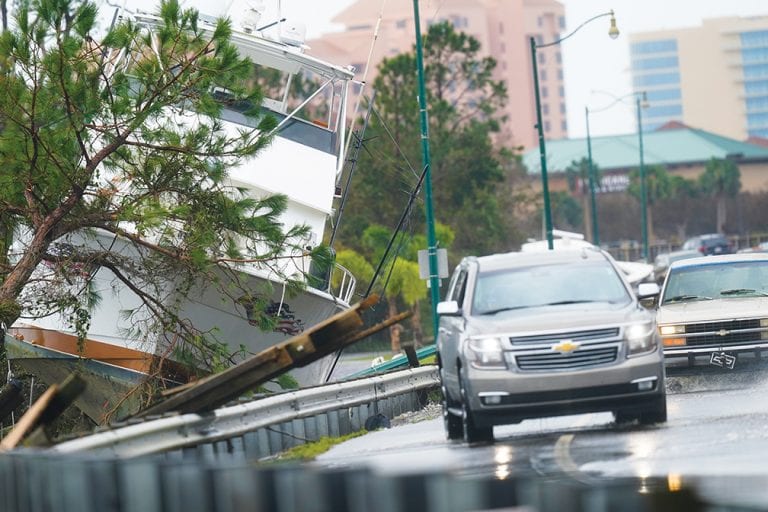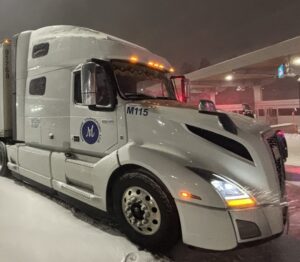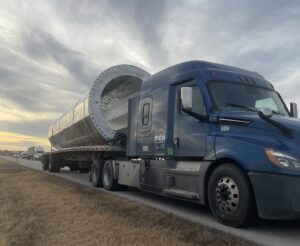June 1 marked the official beginning of hurricane season, and the U.S. is in for another above-normal season, according to the National Oceanic and Atmospheric Administration’s (NOAA) Climate Prediction Center.
Specifically, NOAA computer models predict a 60% chance of an above-normal season, a 30% chance of near-normal and a 10% chance of a below-normal season.
The 2021 season would need to be a doozy to surpass the record set in 2020. Last year, 30 storms grew powerful enough to be named, and 13 of them developed to hurricane strength. Twelve storms made landfall in the continental U.S.; six of those storms were hurricanes.
The previous record for number of storms was 28, set in 2005. The average number of named storms in a year is 14, with seven of them developing into hurricanes. A storm must reach sustained wind speeds of 39 mph to be named and 74 mph to reach hurricane status.
In 2020, Hurricane Laura was the strongest storm to make landfall and caused the most damage. Laura hit southwestern Louisiana as a Category 4 storm (out of a possible 5). In a tragic coincidence, Hurricane Delta came ashore Oct. 9 as a Category 2 storm only a dozen miles from Laura’s landing point. A third hurricane hit Louisiana Oct. 28 when Hurricane Zeta made landfall near New Orleans as a Category 2 storm.
The East Coast was battered near the border between North and South Carolina last year when Hurricane Isaias made landfall Aug. 4 as a Category 1 storm. Tropical Storms Bertha and Fay also hit in the east, with Bertha landing in South Carolina May 27 and Fay hitting New Jersey July 10.
NOAA and other agencies around the world make hurricane predictions based primarily on water temperatures in the Atlantic Ocean, especially in the Caribbean Sea and the Gulf of Mexico. The storms form off the west coast of Africa as swirling winds bring hot air over the Atlantic. The warmer the ocean temperature, the more likely storms are to develop into hurricanes.
This year, ocean temperatures are warmer than normal, but not as warm as they were in 2020, prompting predictions of a robust-but-not-record-setting season. Global warming has been blamed for ocean temperature increases, but improved detection and reporting methods have also contributed to the larger number of storms reported.
This year marks the seventh year in a row that named storms have developed before the official June 1 start of the season. Tropical Storm Ana formed in the mid-Atlantic in late May but dissipated before making landfall.
Storm names are assigned by the World Meteorological Organization (WMO), with the names repeated in a six-year rotation. When a storm becomes severe enough to cause large amounts of damage or loss of life, its name is retired and replaced with a new one.
Storm names selected for 2021 are: Ana, Bill, Claudette, Danny, Elsa, Fred, Grace, Henri, Ida, Julian, Kate, Larry, Mindy, Nicholas, Odette, Peter, Rose, Sam, Teresa, Victor and Wanda. If you’re counting, that’s 21 names, not enough for a season like last year when 30 were needed.
For that reason, the WMO has issued a list of “secondary” names to be used if the first list is exhausted. They are: Adria, Braylen, Caridad, Deshawn, Emery, Foster, Gemma, Heath, Isla, Jacobus, Kenzie, Lucio, Makayla, Nolan, Orlanda, Pax, Ronin, Sophie, Tayshaun, Viviana and Will.
The secondary list marks a change from the prior policy of naming storms that occur after the first list is used up in accordance with letters from the Greek alphabet (Alpha, Beta, Gamma and so forth).
Severe storms can seriously disrupt travel, but the impact on the nation’s population and infrastructure is often far greater. For example, Hurricane Laura caused severe flooding in Louisiana and blocked roads with downed trees and debris. But even after the waters receded and the debris was cleared from roadways, electrical service took longer to restore. Shipping was disrupted as manufacturers and warehouses couldn’t function until the lights came on.
Even before Laura made landfall, portions of Interstate 10 were closed due to the expected “unsurvivable” storm surge. Sections of bridges along I-10 were rated as “structurally deficient” by the DOT, and officials feared catastrophic damage from Laura.
Near St. Charles, Louisiana, a bridge was damaged when winds pushed a casino boat underneath a bridge. In another case, a heavily loaded barge broke loose from its mooring and crashed into bridge pilings, causing considerable damage.
Drivers are cautioned to pay close attention to hurricane season weather reports and to avoid potential landfall areas when possible. If travel into an area recently hit by a storm can’t be avoided, care should be taken to avoid driving through flooded areas — and be sure to watch for downed trees and power lines.
Cliff Abbott is an experienced commercial vehicle driver and owner-operator who still holds a CDL in his home state of Alabama. In nearly 40 years in trucking, he’s been an instructor and trainer and has managed safety and recruiting operations for several carriers. Having never lost his love of the road, Cliff has written a book and hundreds of songs and has been writing for The Trucker for more than a decade.















